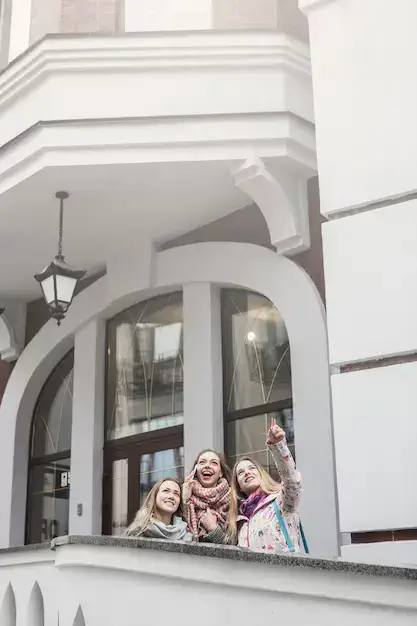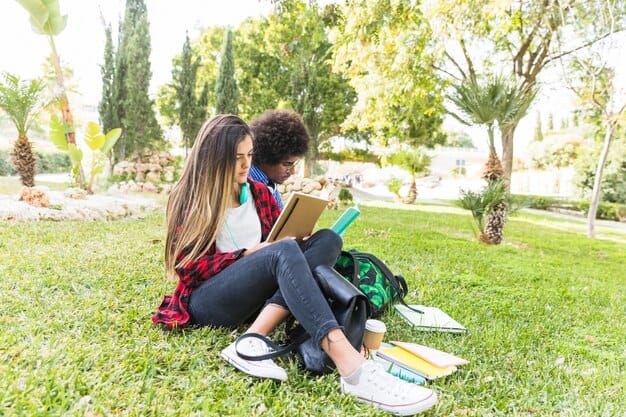A Comprehensive Guide to Applying for a U.S. Visa: Eligibility, Fees, Benefits, and Drawbacks
The United States is a highly attractive destination for a variety of purposes, such as studying, working, healthcare, or tourism. Known for its advanced infrastructure and excellent educational and career opportunities, the U.S. is a global magnet for visitors and immigrants. Since a U.S. visa is the key that opens these opportunities, many individuals seek guidance on how to obtain one and meet the required conditions.
Obtaining a U.S. visa requires a thorough understanding of the procedures, meeting eligibility requirements, and complete knowledge of the necessary documents and paperwork.
Steps to Obtaining a U.S. Visa:
The B-1/B-2 visitor visa is intended for individuals traveling to the U.S. temporarily for business (B-1) or for pleasure or medical treatment (B-2). Generally, the B-1 visa applies to travelers consulting with business associates, attending an educational, scientific, or business-related event, settling estates, or negotiating contracts. The B-2 visa is for recreational travel, such as tourism, family visits, medical treatment, or other social or service-oriented activities. Typically, the B-1 and B-2 visas are combined and issued as a single B-1/B-2 visa.
1. Identify the Visa Type
- Non-immigrant visas: Include tourist visas (B2), work visas (H1-B, L-1), student visas (F, M), and cultural exchange visas (J).
- Immigrant visas: Include family reunification visas, diversity visas (lottery), and employment-based visas.
2. Complete Form DS-160
For non-immigrant visas, you must complete the DS-160 form online. For immigrant visas, other forms may be required.
3. Pay the Visa Fee
Visa processing fees are required and vary depending on the visa type.
4. Schedule an Interview at the Embassy or Consulate
You will need to schedule a visa interview and attend it in person at the U.S. Embassy or Consulate in your country.
5. Attend the Interview
During the interview, you may be asked to present documents proving your financial status, employment, and family connections to confirm that you intend to return after your visit.
6. Await the Decision
After the interview, the embassy will inform you of their decision. Processing times for the visa may vary, taking a few days or weeks.
Types of U.S. Visas
U.S. visas are broadly divided into two main categories: non-immigrant visas for temporary visits, and immigrant visas for permanent residency.
1. Non-Immigrant Visas
- Tourist Visas (B1/B2): Granted for tourism, visiting friends and family, or non-employment-related business activities such as attending conferences.
- Student Visas (F1, M1): Granted to international students seeking to study at American universities, allowing them to stay for the duration of their studies.
- Work Visas (H1-B, H2-B): For individuals seeking temporary or highly skilled employment in the U.S.
- Cultural Exchange Visas (J1): For individuals participating in cultural exchange or study programs for a limited period.
2. Immigrant Visas
Family Reunification Visas: Issued to close relatives of U.S. citizens and permanent residents.
There are special programs in the U.S. to assist refugees and asylum seekers in reuniting with family members. This includes Form I-730 and the Affidavit of Relationship (AOR) for refugees and asylees, as well as special family-based immigration visas for high-priority countries.
- Diversity Visa Lottery: Also known as the visa lottery, this program grants visas to individuals from countries with low rates of immigration to the U.S.
- Permanent Work Visas (EB-5): Available for investors who wish to invest in projects in the U.S. that create jobs, offering a pathway to permanent residency.
How to Apply for a U.S. Visa
Applying for a U.S. visa requires a set of essential steps that should be carefully followed for a successful application.
- Select the Appropriate Visa Type
Choosing the right visa for your visit is crucial, as each visa type has different requirements. - Complete the Application Form (DS-160 or DS-260)
DS-160: For non-immigrant visas.
DS-260: For immigrant visas.
These forms should be completed accurately, with clear and correct information. They require personal details, as well as information about employment, education, and travel history. - Pay the Visa Fee
The fees vary by visa type, with tourist and student visas starting at $160 and work visas costing around $190. - Schedule an Interview at the Embassy or Consulate
Applicants aged 14 and older must attend a personal interview. The date is selected based on embassy or consulate availability. - Attend the Interview and Present Required Documents
The interview is an opportunity for applicants to clarify their visit intentions and answer any questions about their financial status, family, and plans to return home.
U.S. Visa Eligibility Criteria
The decision to grant a U.S. visa depends on several key factors:
1. Family and Professional Ties in the Home Country: Strong family and work ties can enhance the chance of visa approval.
2. Financial Capability: The applicant’s ability to cover travel and residency in the U.S.
3. Previous Travel History: Includes any prior visits to the U.S. or other countries and compliance with previous travel laws.
Benefits of a U.S. Visa
1. Travel Freedom: Allows for entry and exit within the granted period.
2. Visa Diversity: Offers a wide range of visas for various needs, such as study, work, and tourism.
3. Employment Opportunities: Work visas enable individuals to work for American companies and develop professional skills.
4. Residence Opportunities: Some visas for investors or qualified workers can lead to permanent residency.
Drawbacks of a U.S. Visa
1. High Costs: Includes visa fees, additional service charges, and travel and accommodation expenses.
2. Complex Procedures: The application process may be lengthy and involve gathering documents and attending interviews.
3. Risk of Denial: U.S. visas require strict qualifications, and applications may be denied for various reasons.
4. Residence Restrictions: Some visas do not allow holders to work in the U.S. or impose limits on the length of stay.
U.S. Visa Fees
The costs vary based on the visa type:
- Tourist and Student Visas: Start at $160.
- Work Visas: Like the H1-B visa, cost around $190.
- Investor Visas: Require a significant capital investment, ranging from $500,000 to $1 million, along with administrative fees.
It is essential to note that these fees are generally non-refundable if the application is denied, and costs may vary by embassy or consulate location.
Tips for a Successful U.S. Visa Application
1. Prepare Well for the Interview: Be ready to answer questions about your visit purpose and return plans.
2. Apply Early: Start the application process well ahead of the travel date to avoid processing delays.
3. Ensure Document Completeness: Submit all required documents to prevent delays or rejection.
4. Be Honest: Provide accurate and truthful information.
Is a U.S. Visa Right for You?
A U.S. visa can be the gateway to numerous aspirations, whether studying at renowned universities, pursuing advanced career opportunities, or sightseeing in iconic places. However, the visa application process demands thorough preparation and strict compliance with requirements.
If you’re considering applying for a U.S. visa, assess which visa type suits your needs and review all the necessary details and requirements. While obtaining a visa may take time and effort, securing it opens multiple doors to achieve personal or professional goals.



